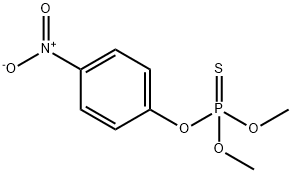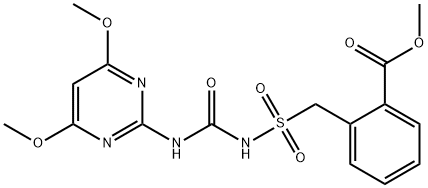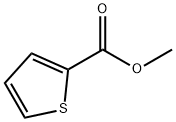4-Methyl-1-pentanol
- CAS NO.:626-89-1
- Empirical Formula: C6H14O
- Molecular Weight: 102.17
- MDL number: MFCD00002962
- EINECS: 210-969-3
- SAFETY DATA SHEET (SDS)
- Update Date: 2024-03-26 17:16:27

What is 4-Methyl-1-pentanol?
Chemical properties
clear colorless liquid
The Uses of 4-Methyl-1-pentanol
4-Methyl-1-pentanol is used as a cosmetic compound with an antimicrobial effect especially deodorants.
The Uses of 4-Methyl-1-pentanol
Isohexanol is used as a cosmetic compound with an antimicrobial effect especially deodorants.
What are the applications of Application
4-Methyl-1-pentanol is may have antimicrobial effects
Definition
ChEBI: 4-methylpentan-1-ol is a primary alcohol that is pentan-1-ol bearing an additional methyl substituent at position 4. It has a role as a metabolite. It is a primary alcohol and an alkyl alcohol.
Properties of 4-Methyl-1-pentanol
| Melting point: | -48.42°C (estimate) |
| Boiling point: | 160-165 °C (lit.) |
| Density | 0.821 g/mL at 25 °C (lit.) |
| refractive index | n |
| Flash point: | 125 °F |
| storage temp. | Sealed in dry,Room Temperature |
| solubility | DMF: 50 mg/mL; DMSO: 50 mg/mL; Ethanol: 50 mg/mL; PBS (pH 7.2): 1.4 mg/mL |
| pka | 15.21±0.10(Predicted) |
| form | clear liquid |
| color | Colorless to Almost colorless |
| Odor | nutty |
| Water Solubility | 10.42g/L(20 ºC) |
| BRN | 1731303 |
| CAS DataBase Reference | 626-89-1(CAS DataBase Reference) |
| NIST Chemistry Reference | 1-Pentanol, 4-methyl-(626-89-1) |
Safety information for 4-Methyl-1-pentanol
| Signal word | Warning |
| Pictogram(s) |
 Flame Flammables GHS02 |
| GHS Hazard Statements |
H226:Flammable liquids H302:Acute toxicity,oral |
| Precautionary Statement Codes |
P210:Keep away from heat/sparks/open flames/hot surfaces. — No smoking. P233:Keep container tightly closed. P240:Ground/bond container and receiving equipment. P241:Use explosion-proof electrical/ventilating/lighting/…/equipment. P242:Use only non-sparking tools. P243:Take precautionary measures against static discharge. P264:Wash hands thoroughly after handling. P264:Wash skin thouroughly after handling. P270:Do not eat, drink or smoke when using this product. P280:Wear protective gloves/protective clothing/eye protection/face protection. P303+P361+P353:IF ON SKIN (or hair): Remove/Take off Immediately all contaminated clothing. Rinse SKIN with water/shower. P370+P378:In case of fire: Use … for extinction. P403+P235:Store in a well-ventilated place. Keep cool. |
Computed Descriptors for 4-Methyl-1-pentanol
| InChIKey | PCWGTDULNUVNBN-UHFFFAOYSA-N |
New Products
4-Aminotetrahydropyran-4-carbonitrile Hydrochloride (R)-3-Aminobutanenitrile Hydrochloride 4-AMINO-TETRAHYDRO-PYRAN-4-CARBOXYLIC ACID HCL 4-(Dimethylamino)tetrahydro-2H-pyran-4-carbonitrile 3-((Dimethylamino)methyl)-5-methylhexan-2-one oxalate 1,4-Dioxa-8-azaspiro[4.5]decane 5-Bromo-2-nitropyridine Nimesulide BP Aceclofenac IP/BP/EP Mefenamic Acid IP/BP/EP/USP Diclofenac Sodium IP/BP/EP/USP Ornidazole IP Diclofenac Potassium SODIUM AAS SOLUTION ZINC AAS SOLUTION BUFFER SOLUTION PH 10.0(BORATE) GOOCH CRUCIBLE SINTERED AQUANIL 5 BERYLLIUM AAS SOLUTION 2-Bromo-1-(bromomethyl)-3-chloro-5-nitrobenzene 2-Bromo-3-nitroaniline N-(3-Hydroxypropyl)-N-methylacetamide 3-Bromo-6-chloropyridazine 4-ethyl-3-nitrobenzoic acidRelated products of tetrahydrofuran








You may like
-
 4-Methyl-1-pentanol CAS 626-89-1View Details
4-Methyl-1-pentanol CAS 626-89-1View Details
626-89-1 -
 4-Methyl-1-pentanol CAS 626-89-1View Details
4-Methyl-1-pentanol CAS 626-89-1View Details
626-89-1 -
 1823368-42-8 98%View Details
1823368-42-8 98%View Details
1823368-42-8 -
 2-(3-(tert-butyl)phenoxy)-2-methylpropanoic acid 1307449-08-6 98%View Details
2-(3-(tert-butyl)phenoxy)-2-methylpropanoic acid 1307449-08-6 98%View Details
1307449-08-6 -
 Ethyl 3-(furan-2-yl)-3-hydroxypropanoate 25408-95-1 98%View Details
Ethyl 3-(furan-2-yl)-3-hydroxypropanoate 25408-95-1 98%View Details
25408-95-1 -
 2-Chloro-5-fluoro-1-methoxy-3-methylbenzene 98%View Details
2-Chloro-5-fluoro-1-methoxy-3-methylbenzene 98%View Details
1805639-70-6 -
 1784294-80-9 98%View Details
1784294-80-9 98%View Details
1784294-80-9 -
 Lithium ClavulanateView Details
Lithium ClavulanateView Details
61177-44-4
Statement: All products displayed on this website are only used for non medical purposes such as industrial applications or scientific research, and cannot be used for clinical diagnosis or treatment of humans or animals. They are not medicinal or edible.